In an extremely rare move, the Design Commission has denied the Ankeny Apartments. The Central Eastside development, designed by YGH Architecture, would include a mix of 17 one and two bedroom apartment units. The 5 to 6 story building is intended to achieve net zero energy use, and incorporates sustainable features such as photovoltaic panels at the roof and walls, triple pane passive house rated windows, and highly insulated walls and roofs. The project would not contain any vehicular parking, but would include long term bike parking for fifteen bicycles at the ground floor and parking for thirteen bicycles in the units.
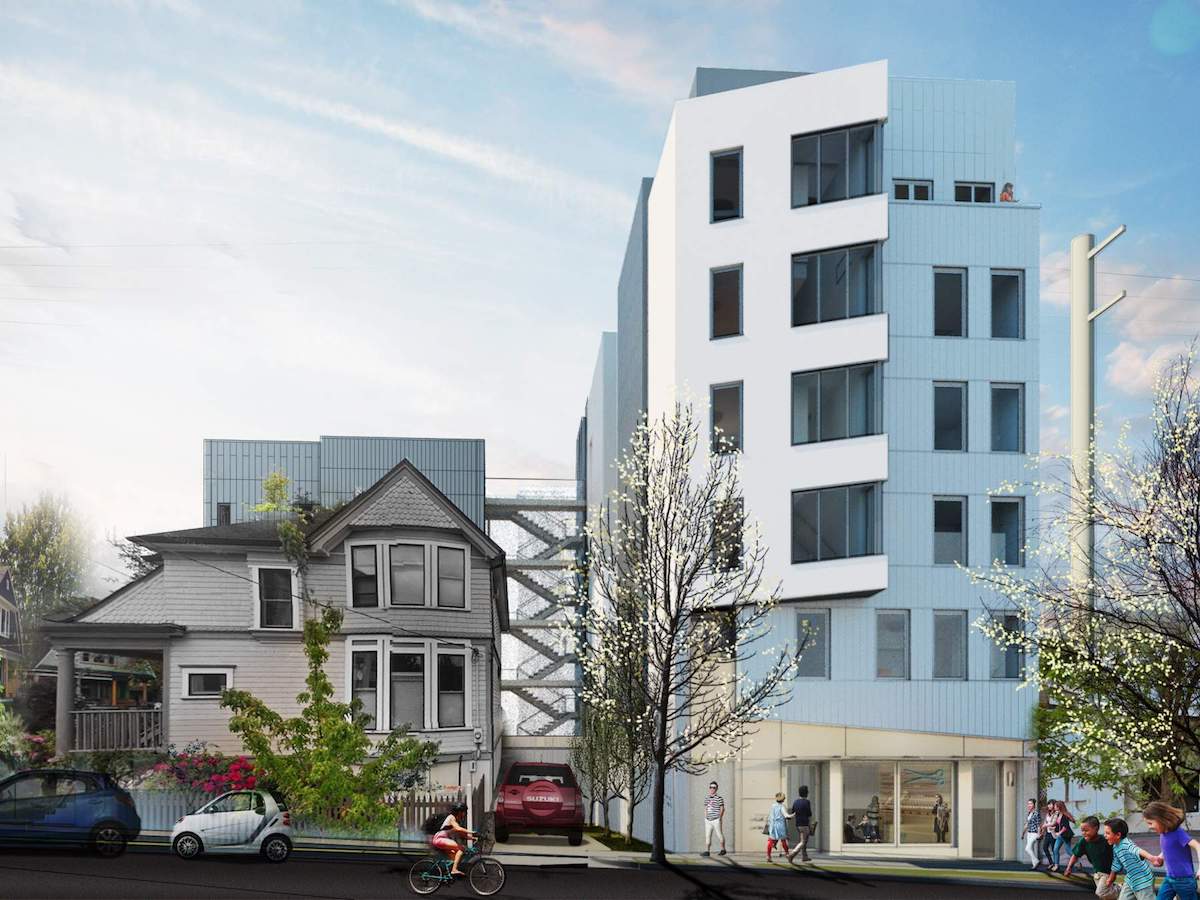
The project would be constructed on two adjoining lots, which together form an “L” shape. The 34′ x 100′ lot facing at 1122 SE Ankeny St is currently occupied by a residential structure, built in 1903 and currently in use as a hair salon. The 30′ x 66′ lot facing SE 12th is currently vacant. The project is being developed by owner of the salon, and would incorporate a new space for the salon facing SE Ankeny St.
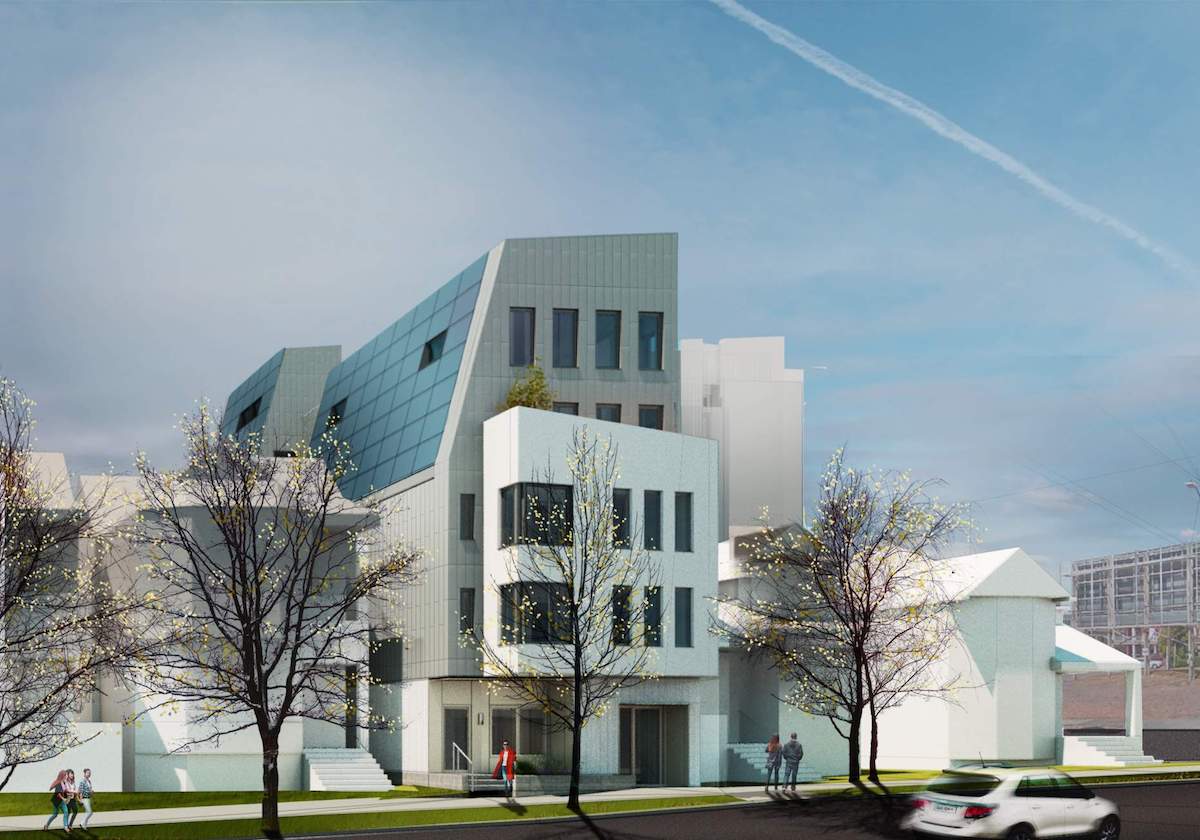
In response to the tight 5,380 sq ft L-shaped site, the building would be built almost to the property lines at all sides. The mass of the building is arranged as three primary volumes, connected by exterior stairs and walkways.
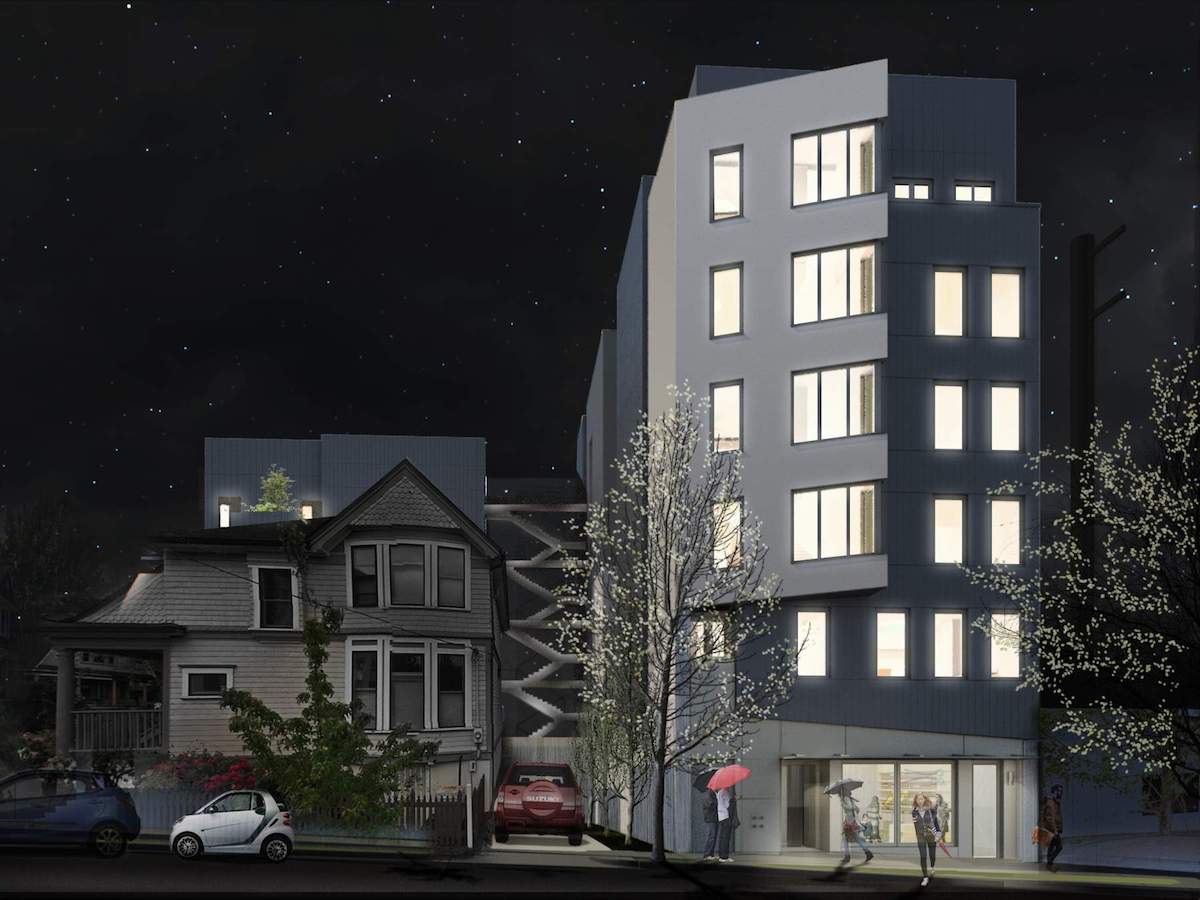
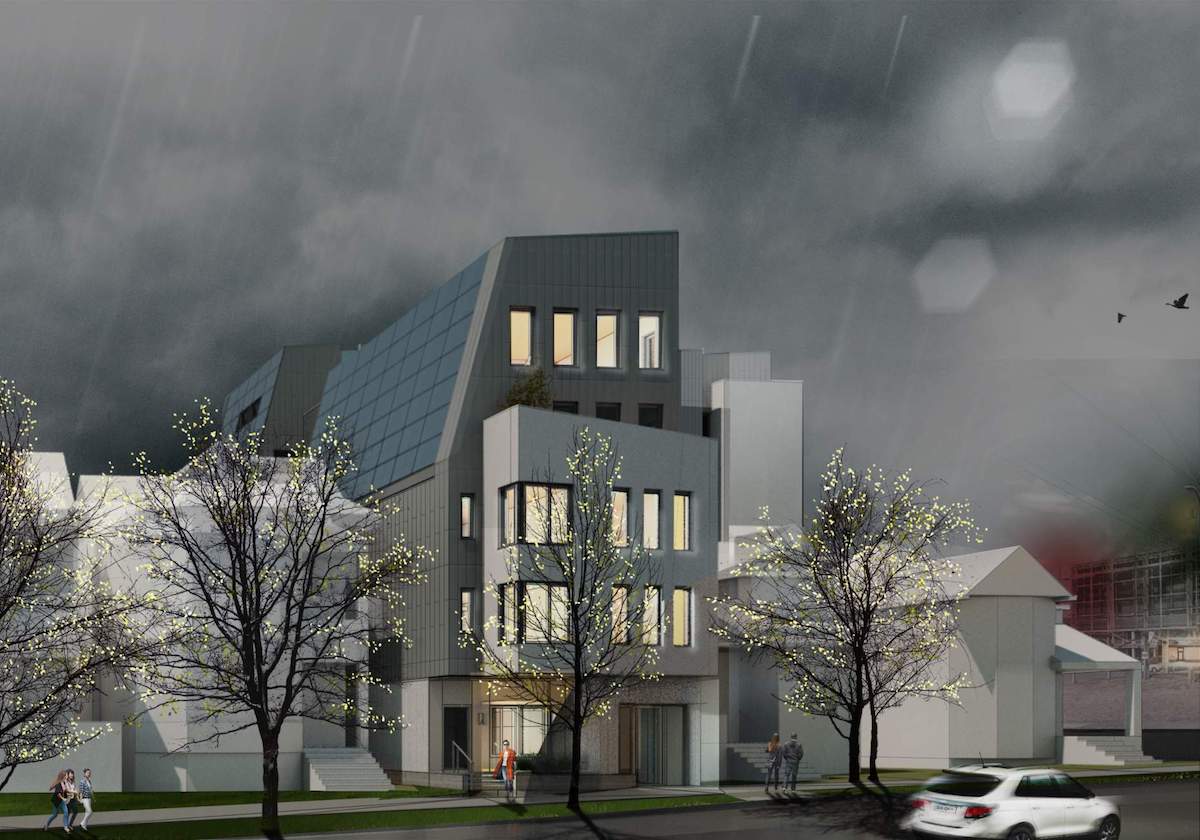
Materials proposed include white textured plaster skim coat and steel panels at the ground floor, flat-lock zinc panels in two sizes and 3-coat plaster render above, stainless steel cable mesh, aluminum-clad windows, and solar panels.
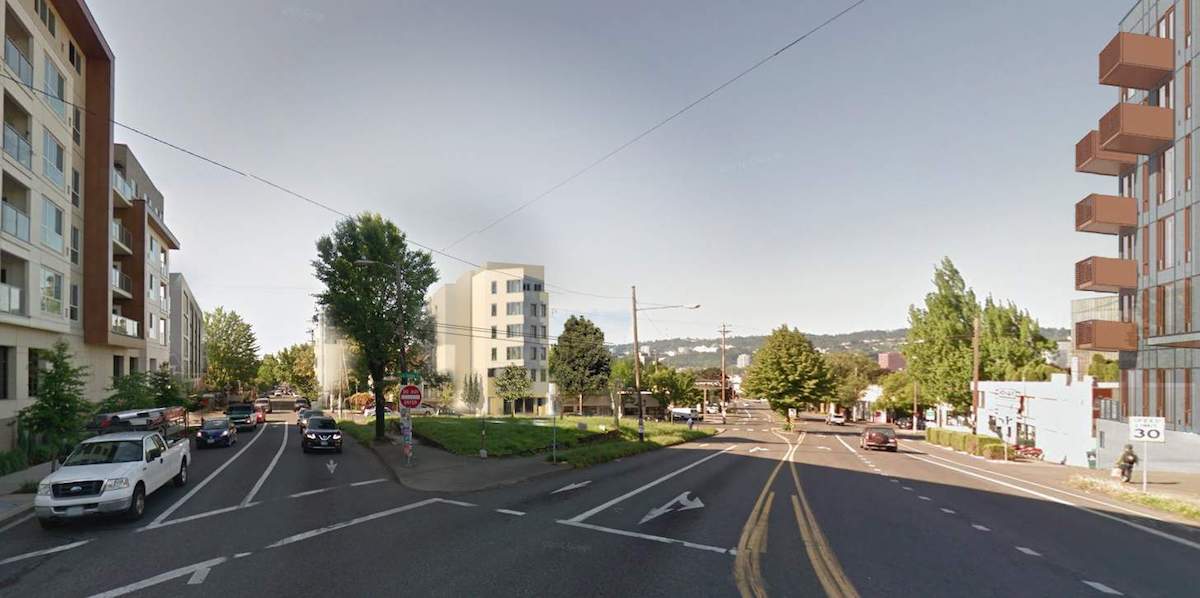
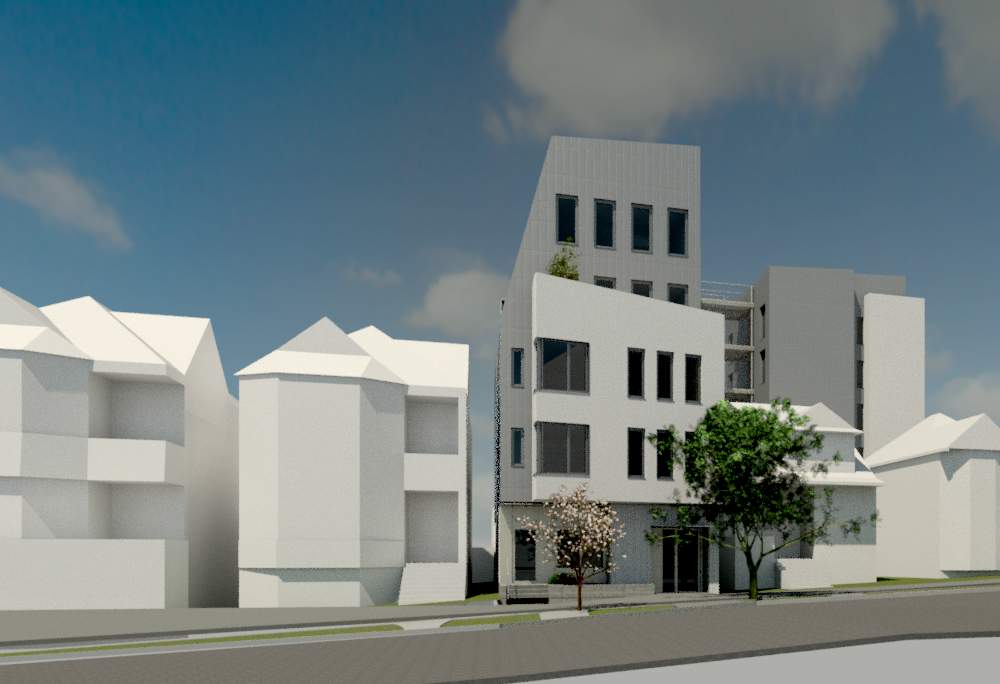
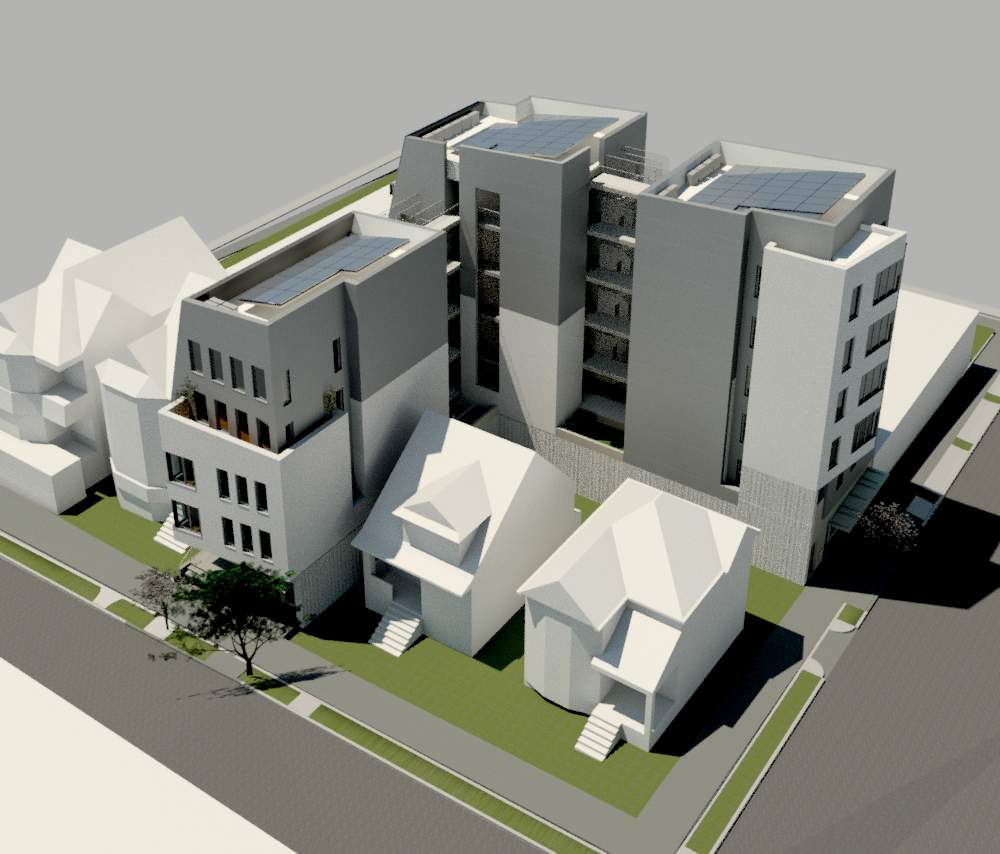
The denial of the project is unusual, given that the City of Portland’s Design Review system is set up to “get to yes”. The project went before the Design Commission five times, with hearings held on October 6th, December 1st, January 5th, January 19th and February 2nd. Changes made during the process since the first hearing included: the elimination of the ground floor vehicular parking; a reduction in the height of the building on 12th Avenue, adjacent to neighboring single family houses; the replacement of the wood elements with more durable and long lasting materials; and setting the upper floors on 12th Avenue further back from the street.
At the third hearing, where the images in the post were first presented, a Staff Report and Recommendation to the Design Commission recommended approval. The Design Commission nevertheless continued to have reservations about the scale of the project in its context. While the development is within the limits of the height and setbacks allowed by the Portland Zoning Code, the Design Commission felt that it did not meet the subjective approval criteria of the Central City Fundamental Design Guidelines and the Special Design Guidelines for the Design Zone of the Central Eastside District. A Revised Staff Report was therefore presented at the fourth hearing, which concluded that the project should be denied:
While there are many aspects of the proposal that are admirable, such as the net zero goals, and meet several design guidelines, such as A8, Contribute to a Vibrant Streetscape, fundamental challenges of scale, massing and compatibility have not been successfully addressed. While the applicant pursued some significant changes such as eliminating ground floor parking, the remaining changes were far too modest to ultimately meet the approval criteria.
Therefore, due to the lack of substantive changes to the massing, scale and bulk of the sidewalls, the open stairwells, and the extent of metal cladding, the Commission found that the following guidelines are not yet met:• C3-2. Respect Adjacent Residential Neighborhoods.
• C4. Complement the Context of Existing Buildings.
• C5. Design for Coherency.Additionally, due to the concerns with the massing of the sidewalls, and the compatibility of the metal panel cladding, staff found that some aspects of the following guidelines were also not yet met:
• A4. Use Unifying Elements.
• A5. Enhance, Embellish, and Identify Areas.
• C3-1 Design to Enhance Existing Themes in the District.Given the fundamental challenges of this high density development on an extremely restrictive lot size and unusual, mid-block “L” shape, a Design Advice Request would have been extremely beneficial to the process and the timeline for this development, as was advised by Staff at the beginning of the process, and by the Design Commission at subsequent hearings.
The revised staff report was unanimously adopted at the fifth and final hearing. The denial of the project is likely to be appealed to the City Council.
Drawings
- Plan – Site / Level 1
- Plan – Level 2
- Plan – Level 3
- Plan – Level 4
- Plan – Level 5
- Plan – Level 6
- Plan – Roof
- Elevation – Ankeny St (North)
- Elevation – 12th Ave (East)
- Elevation – Courtyard (East)
- Elevation – South & Courtyard (West)
- Elevation – West
- Elevation – Courtyard (North)
- Section
- Section
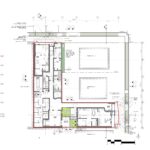
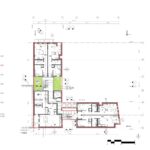
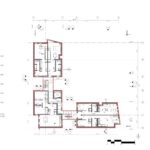
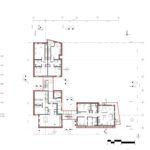
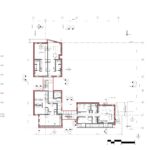
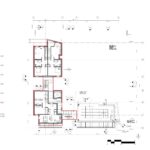
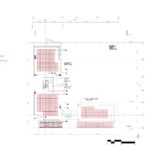
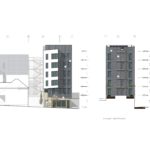
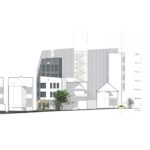
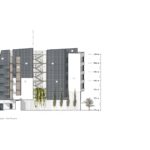
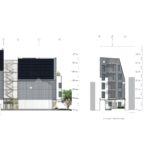
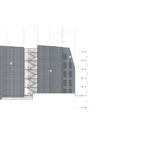
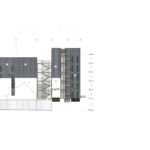
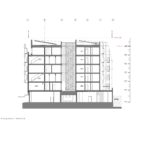
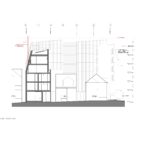
This is probably the best example of saying “screw you” to your neighbors. Who wants to live in the houses next to this?
There are no “adjacent residential neighborhoods”. There are, directly adjacent, as well as across SE 12th, houses in the EX zone and houses in the CG zone. Neither of those is a “residential neighborhood”, except temporarily. All the adjacent zoning is Employment or Commercial. In fact a house was recently removed right across 12th at the corner of Ankeny, and a four story building is going up there, un-hampered by the Design Commission.
Those concerned about this precedent should make sure to comment on the online survey for the DOZA process, at: https://www.surveymonkey.com/r/dozaopenhouse (deadline is Feb. 17),
and let staff know that limiting Height and FAR entitlements during Design Review through the pretext of “neighborhood context” should not be allowed. There’s not a question for that, so you’ll have to squeeze it into a comment box.
It is frustrating to see a high quality building denied in a location where it is so appropriate. This a commercial/light industrial neighborhood with sporadic residential. The linden is practically across the street, the triangle at Burnside/11th/Sandy is getting developed- this would fit right in. I hope they appeal and win.
I get the zoning for the area allows this. The developer should do the right thing and buy up the two houses that are stuck in the middle of this development. It’s the right thing to do. As it currently stands, if this gets built, it will be used an example of large scale development overwhelming neighboring houses.
Perhaps he’s tried. The corner house has a business sign at the front door, and the other one seems to be a rental. But you’re right about the optics.
It’ll be like the micro-apartments across from the Hollywood Trader Joe’s. The media framed the story as this huge building going between some bungalows. “Would you want this on your street?” The real story though, is that all of those bungalows house businesses, and are zoned commercial, plus (which the media never showed) there’s the TJ’s across the street.
The neighbors to the North came to the Buckman Community Association to express their dissatisfaction with the prospect of living next to a tall building. They seemed to think that the project developer had offered to buy their property from the owner, but houses have sentimental value and not everybody is ready to up-and-move or see their one-time home demolished.
I was really looking forward to this building, what a shitty decision.
I think the precedent this decision sets is appalling. If the design meets objective rules outlined in the zoning code this should be approved. That being said, the design is awful. How can an architecture firm feel proud or even semi OK with the quality of this work? How did a client accept this aesthetic solution? Did they not get the point that the design is bad when they weren’t approved the first four times?
Instead of waisting more time and money appealing the decision to city council, the client should fire the Architects and hire a better design team.
If/When this goes to Council, it would help for folks to be there to testify about the need to approve what the zoning allows, and keep design issues out of the realm of height and FAR. While we can debate the quality of the design, it seems we agree that DC should not cite “adjacent residential” in the middle of a Commercial Zone, as a reason to deny the approval.
Conversely, the developer should re-think the strategy of trying to stuff 10 lbs. of cash into a 5 lb. sack. It is possible the design team may have been asked to maximize area, and thus, profit. The developer shouldn’t seek out an awkward “L” shaped lot which surrounds two story single family homes with a 6-story sun shade. Sometimes an architect has to design a stubborn client’s vision simply to prove, that for various reasons, it doesn’t work.
I agree with the design commission’s decision, but I also agree that the zoning code criteria regarding height and massing needs to be examined in cases where it is in clear conflict with the existing two-story single-family urban fabric.
Or perhaps the city needs to actually follow the adopted Comprehensive Plan and let some blocks that have houses now, be redeveloped as multi-story buildings, rather than let existing single-family fabric, even near 12th and Burnside, dictate what will be allowed in one block of the Central City. That’s a key concept of City Planning: decide what direction is wanted for each block and set the zoning to achieve that, even if it means a sometimes awkward transition when the new replaces the old.
All good points.All subjective since none of your money was spent. When life deals you lemons you make lemonade. Nothing is perfect. Thats a real life perspective. Its an L. Thats what it is.The design team worked with what was presented. Cudos to the design team for working with lemons and making lemonade. Design Review didn’t offer any guidance therefore didn’t do their job further validating the DOZA report. (DROP THE MIC.)
If we are to approve “what the zoning code allows” as some have suggested we would have no need for the Design Commission. Staff could simply say yes or no. Codes are static theoretical guidelines which need to be applied to a dynamic real place, time and context. Does the Design Commission always get it right? Probably not depending on who you ask. Who does? But if we are to end our present process we should look to the many places that allow “whatever the code allows” and see if we like the results. Keep in mind the chief purpose of the Design Commission is not to guarantee great Architecture but rather enforce many of Portland’s urban design standards which have given the town much of its pedestrian friendliness and other qualities. Can we improve the process and outcomes? Absolutely. But let’s not throw the baby out with the bathwater. It’s important to remember architects themselves are often not pleased with their proposals given the constraints their clients put on them. It’s important to have that “third voice”—the civic voice–to advise and consent in addition to the designer and the developer.
One more thing to consider: YGH apparently did not request design advice despite receiving recommendation to do so. Most of Portland’s top firms often request Design Advice and see it as a positive part of the process. I’m not defending the DC’s decision or the proposed design on this project but one can see how things might have gone wrong. The previous comment indicating this design should be allowed but the client should have chosen a better firm or proposal only proves the value of the DC. The DC in effect is telling the client to just that.
Perhaps there’s a smaller set of entitlements that could be upheld. I’m not saying there shouldn’t be design review, but it should not be used to reduce height or FAR. It can require more doorways or windows, different ground floor designs, etc. But basic bulk that the zone allows should remain. The “sculpting” of the city, at the lot-by-lot level, was done when Planning and Sustainability Commission approved the zoning pattern. Finer sculpting by Design Commission is perhaps appropriate, as long as the same FAR remains and the same height entitlement, in my view. Asking a design to respect an adjacent building that could go away tomorrow does not make much sense. We’d have stepdowns for no reason.
400 projects last year. How did DC miss it. 5 reviews and just couldn’t hit the target. I suppose the developer just wanted to blow money and didn’t listen. Blame YGH or the developer. Burden still falls on DC to guide the process to acceptance.
Hope D.C. knows essentially denying the property owner the right to develop even though zoning allows for this type of development is against the law. Five times in front of D.C. This developer obviously like a fight.
So obviously ugly!!!
Pingback: Portland's New Design Rules Could Kill Housing—But They Don't Have To